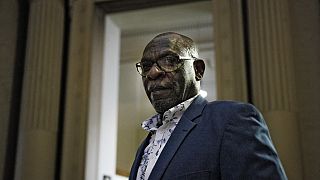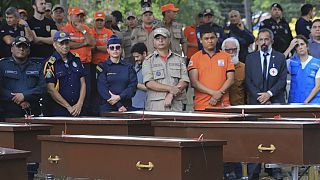Rwanda
Four memorials to the 1994 genocide in Rwanda of more than 800,000 people, mainly Tutsi, were added to UNESCO's World Heritage list on Wednesday, the UN cultural body said.
The sites at Nyamata, Murambi, Gisozi and Bisesero commemorating the mass killings were "just inscribed on the UNESCO World Heritage list", the organisation posted on X (formerly Twitter).
The four sites commemorate the genocide that targeted the Tutsi minority in large part but also moderate Hutus who were shot, beaten or hacked to death by Hutu extremists between April and July 1994.
"This historic decision will help safeguard memory, counter denial and strengthen genocide prevention efforts globally. #NeverAgain," Rwandan government spokeswoman Yolande Makolo posted on X.
The UNESCO move was also welcomed by Naphthali Ahishakiye, executive secretary of Ibuka, the association representing survivors of the genocide.
"This will make the genocide that was committed in Rwanda against the Tutsi more known across the world," he told AFP in Kigali.
Skulls, bone fragments, torn clothing and images of piled up corpses confront visitors to the Kigali Genocide Memorial in Gisozi, the final resting place of around 250,000 victims.
Each year more are buried as new graves are uncovered around the country, with remains also housed at a former Catholic church at Nyamata, a school complex at Murambi and a memorial at Bisesero built in 1998.
In addition to human remains, the sites also feature material evidence of the 100-day killing spree by Hutu extremist forces -- spears, machetes, clubs and bladed weapons.
Three of the sites were themselves the scene of massacres.
At Nyamata, more than 45,000 people who had sought shelter in the church were slaughtered in one day, according to UNESCO.
Its chapel now houses the clothing and rosaries worn by the victims along with the weapons used by the perpetrators of the killings.
Mass graves are situated behind the church, with a vault that houses the skulls of victims and other human remains, according to the memorial's website.
At Murambi, tens of thousands of people who were encouraged to take refuge in the technical school on the pretext of ensuring their safety were executed in one of the genocide's bloodiest episodes.
At Bisesero, a "resistance memorial" pays tribute to Tutsis who fought back with spears and stones as Hutu extremists murdered hundreds of people in the surrounding hills.
The genocide was unleashed shortly after the ethnic Hutu president was killed when his plane was shot down in an attack blamed by the government on Tutsi rebels.
The killing ended only when the Tutsi-led Rwandan Patriotic Front (RPF) took over in July 1994, having having defeated the Hutu extremists.
Trials of genocide suspects have been held in Rwanda, at a UN tribunal in the Tanzanian city of Arusha, as well as in France, Belgium and the United States among others.











02:22
Rwanda's leader criticises perceived US ambiguity over 1994 genocide
01:48
Rwanda: "Never will our people be left for dead again"- Kagame
Go to video
Rwanda genocide: No fresh remark on France’s responsibility, why did the presidency backpedal?
02:09
Rwandan genocide anniversary a chance to reflect, heal - Analyst
01:00
1994 Rwanda genocide: UN exhibit shows how “peace is our choice”
01:58
Rwanda: Fostering national unity through dance